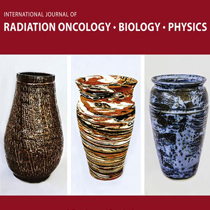
The following includes excerpts from Dr. Deville’s editorials in the two special HEDI issues of the Red Journal. Read the full editorials and explore each special issue at www.redjournal.org.
It’s been said that we often overestimate what can be accomplished in a year and underestimate what can be accomplished in a decade. It’s been over a decade since Christina Chapman, MD, MS, and I published the first physician workforce diversity analysis in our specialty.1 At the time, I found only a single publication discussing concepts of diversity, underrepresentation and exclusion in our field — an editorial by Reshma Jagsi, MD, PhD, FASTRO, and Nancy Tarbell, MD, FASTRO, discussing the lack of gender representation and the need to address the proverbial “glass ceiling.”2
Over a decade later, hundreds of manuscripts exploring health equity, diversity and inclusion (HEDI) across a range of topics in radiation oncology, biology and physics have since been published, and we arrive today at the Red Journal’s HEDI special editions with dozens more contributions carrying the potential to inform and shape the field. But progress does not occur simply with the passing of time. Tireless, restless, persistent and courageous efforts by early, mid-, and advanced-level trainees, physicians, physicists, scientists, administrators and leaders have facilitated the awakening and commitment to diversity, equity and inclusion in our field, ultimately to the benefit of our future patients, colleagues and staff. Below, I give a brief overview of several studies included in each issue, but I strongly encourage all readers of this blog to study both special issues carefully.
The first HEDI special issue includes a number of analyses and interventions to address health equity in radiation oncology, medical physics and radiation biology. In their manuscript, Radiotherapy Deserts: The Impact of Race, Poverty and the Rural-Urban Continuum on Density of Providers and Use of Radiation Therapy in the United States, Alcorn et al. characterize so-called radiation deserts — areas with the greatest mismatch of oncologic need and radiation resources — and provide an online tool to drive targeted investigation of underlying barriers to care in areas of highest need, with the goal of reducing health inequities in this context.
Kronfli et al. report on a psychosocial needs assessment implemented for patients with cancer undergoing curative radiation therapy in an inner-city, academic center to address radiation disparities. In their companion editorial, Suneja et al. laud the efforts of this group’s targeted intervention to address social determinants of health such as socioeconomic and transportation barriers, delve further into fundamental concepts in health equity, and provide cautionary guidance for investigators to ensure that their analyses and author teams do not themselves perpetuate inequities, exclusion and bias and moreover risk engaging in health equity tourism.3
Regarding progress toward inclusive clinical trial enrollment, Roy et al. provide a framework in their critical review Increasing Diversity of Patients in Radiation Oncology Clinical Trials, while Chen et al. discuss why the Inclusion of Sexual Orientation and Gender Identity in Clinical Trials is Necessary for Health Equity, and Patel et al. discuss the role of industry partners in Carrots or Sticks: An Industry Perspective on the Significance of Regulatory Guidance in Promoting Participant Diversity in Clinical Trials.
The second volume of the HEDI special issue highlights needs and innovations across a variety of domains: the physician, physics and basic scientist workforce, education, technology access and global health. With respect to workforce diversity and inclusion, analyses of demographic representation trends reveal that women and historically underrepresented racial and ethnic groups in medicine (URiM) remain excluded, likely along with a host of other marginalized groups for whom data is largely unavailable.
The review by Jimenez et al. entitled Using Holistic Residency Applicant Review and Selection in Radiation Oncology to Enhance Diversity and Inclusion, an ASTRO SCAROP-ADROP-ARRO Collaboration, opens with a detailed review of current representation trends and the lack of significant changes in representation for women and URiM trainees in radiation oncology over the past decade, despite gains in the overall U.S. graduate medical education trainee pool. Broadening the scope of diversity with additional dimensions is increasingly needed to assure equity, inclusion and belonging. Such historically marginalized dimensions include deaf and disabled status, veteran status, sexual orientation and gender identification (SOGI), first generation and low income (FGLI), religion, geography (e.g., urban versus rural) and disadvantaged background. Limited data exist regarding representation of many of these groups within medicine and radiation oncology specifically, but several data collection initiatives are underway and included in this edition.
Marginalized demographic groups remain disproportionately underrepresented and ultimately excluded in radiation oncology relative to the available pool. This indicates that simply increasing the pipeline is not enough without thoughtful recruitment, applicant review and selection, and retention and advancement strategies as reviewed in the HEDI focus issues.
Our charge is that the next decade and beyond bring scaled, sustained, strategic departmental, organizational and societal policies and interventions that address the long-standing disparate representation in the radiation oncology physician, medical physics and radiation biology scientist workforce. These efforts are requisite if we wish to dismantle structural bias and systemic inequities in the specialty and ensure that our workforce is reflective of the ever-diversifying domestic and global patient populations and communities we serve.
References
- Chapman CH, Hwang WT, Deville C. Diversity based on race, ethnicity, and sex, of the US radiation oncology physician workforce. Int J Radiat Oncol Biol Phys. 2013 Mar 15;85(4):912-8.
- Jagsi R, Tarbell NJ. Women in radiation oncology: time to break through the glass ceiling. J Am Coll Radiol. 2006 Dec;3(12):901-3.
- Lett E, Adekunle D, McMurray P, et al. Health Equity Tourism: Ravaging the Justice Landscape. J Med Syst. 2022 Feb 12;46(3):17.


